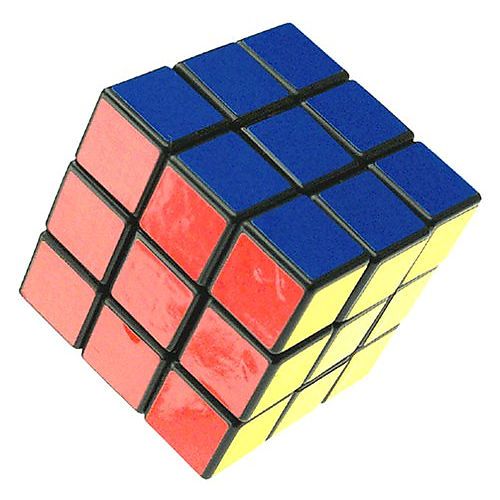[dt_button link=”http://d165vjqq8ey7jy.cloudfront.net/mp3/27222/se-7335s.mp3″ target_blank=”true” button_alignment=”default” animation=”fadeIn” size=”small” style=”default” bg_color_style=”custom” bg_color=”#333333″ bg_hover_color_style=”custom” bg_hover_color=”#444444″ text_color_style=”custom” text_color=”#ffffff” text_hover_color_style=”custom” text_hover_color=”#dddddd” icon=”fa fa-cloud-download” icon_align=”left”]Yuklash[/dt_button]
[dt_divider style=”thin” /]
Transcript:
Voice 1
Welcome to Spotlight I’m Liz Waid.
Voice 2
And I’m Ryan Geertsma. Spotlight uses a special English method of broadcasting. It is easier for people to understand, no matter where in the world they live.
Voice 1
Have you ever played with a Rubik’s Cube? It looks like a small square box. You can hold it in your hand. The Rubik’s cube is made up of smaller cubes that fit together. You can see nine of these smaller cubes from each side. And each side is a different color. People can move each part of the cube. This mixes up the colors. This colorful toy is a puzzle – a kind of problem for people to solve. To play the puzzle a player mixes the colors. Then he must put the colors back where they belong.
Voice 2
People all over the world play with this toy. Since 1980, 350 million Rubik’s Cubes have been sold. Cubes have appeared in books, magazines, and television programs. People have published books and directions for solving this puzzle. Some people say it is the most popular toy in history. But why? Today’s Spotlight is on the Rubik’s cube.
Voice 1
Erno Rubik invented the Rubik’s Cube in Hungary in 1974. Rubik was very interested in puzzles. He loved building things and understanding how they worked. Rubik had an idea about an object he wanted to build. He wanted to make a structure that would let individual blocks move separately, or independently, from each other. But he did not know exactly how to build it. The difficult part was to keep the object in one piece while each separate part moved. Building it was a puzzle. Rubik told news organization CNN about this process.
Voice 3
“Today, you have three dimensional printing and programs on computers. But I was working at a very different time. There was a workshop at school. I just used wood as a material because it is very simple to use. You do not need any complex machines. So, I made it just by using my hands – cutting the wood, drilling holes, using elastic bands and those kind of very simple things.”
Voice 2
Rubik carefully put the object together. It was in the shape of a cube – it had six square sides. He marked each side with a different color. Then he began moving the cube in any way he wanted. The colors of each side began to mix. He described the first time he worked with the cube to reporter John Tierney.
Voice 3
“It was wonderful to see how the colors became mixed after only a few turns. It seemed to have no order. It was extremely satisfying to watch this color parade. But it was like after a nice walk when you have seen many beautiful things. You decide to go home. After a time, I decided to go home. I wanted to put the cubes back in order. And it was at that moment that I came to understand the Big Challenge: What is the way home?”
Voice 1
Rubik did not know how to put the pieces back to their original positions. But he knew there must be an answer. He told Tierney:
Voice 3
“It was like looking at a piece of writing written in a secret language. But for me, it was a language I myself had invented! Yet, I could not read it. This was such a strange situation that I simply could not accept it.”
Voice 2
It took Rubik over a month to find the solution to this puzzle. He had to study the object and understand it. Finally, he solved it.
Voice 1
Rubik knew he had created a very interesting puzzle. He called his invention the “Magic Cube”. He wanted to sell it. He found a toy maker in Hungary that would produce the “Magic Cube” toys. They began selling it in 1977 in Hungary.
Voice 2
But a large toy seller, Ideal Toy Corporation, also wanted to sell the Cube. They changed the name of the toy to “Rubik’s Cube”. They began selling it in cities around the world. In 1981 they sold one and a half million Rubik’s Cubes. The toy was a great success!
Voice 1
In only two years, the cube was even more popular. By 1982, more than 100 million Rubik’s Cubes were sold around the world. And everyone wanted to know how to solve this puzzle. Patrick Bossert was only 12 years old when he wrote a book about the Rubik’s Cube. This was the first book to show how to solve the Cube. But it was not the last! Today, there are many books and videos that teach people ways to solve the Cube.
Voice 2
Many scientists and math experts have studied the Rubik’s Cube. People use mathematics to create algorithms to solve the Cube. Algorithms are set moves a person can follow. A person follows the moves in the correct order. Following the moves helps to solve the Cube. Some algorithms are simple and some are very complex. Algorithms may help to solve only one side of the puzzle. Or they may solve a corner piece or other part. A person may need to use a few of these algorithms to solve the Cube.
Voice 1
Some people have turned solving the Rubik’s Cube into a kind of sport! People compete to solve the Rubik’s Cube in the fastest time. This is called Speedcubing. Mats Valk holds the current record for solving the original Rubik’s Cube. He solved the cube in just over five and a half seconds. Other competitions involve solving the Rubik’s cube with only one hand, or with the feet, or even with a covering over the eyes.
Voice 2
People still study the Rubik’s Cube. They continue to learn new things about it. For example, imagine turning one section of the Cube. This is one position. When you turn another part of the Cube, that is another position. There are thousands of millions of different Rubik’s Cube positions. But you can solve the Rubik’s Cube from any position by moving it only 20 times. That is what a group of researchers proved in July of 2012.
Voice 1
Today Erno Rubik has retired from working. But he still works with young designers. He helps them create new puzzles. But there may never be another puzzle like the Rubik’s Cube. Rubik says:
Voice 3
“Not a lot of objects can make emotions in people. The Cube is one of them. People like its beauty, simplicity, and form. It is really not a puzzle or a toy. It is a piece of art.”




